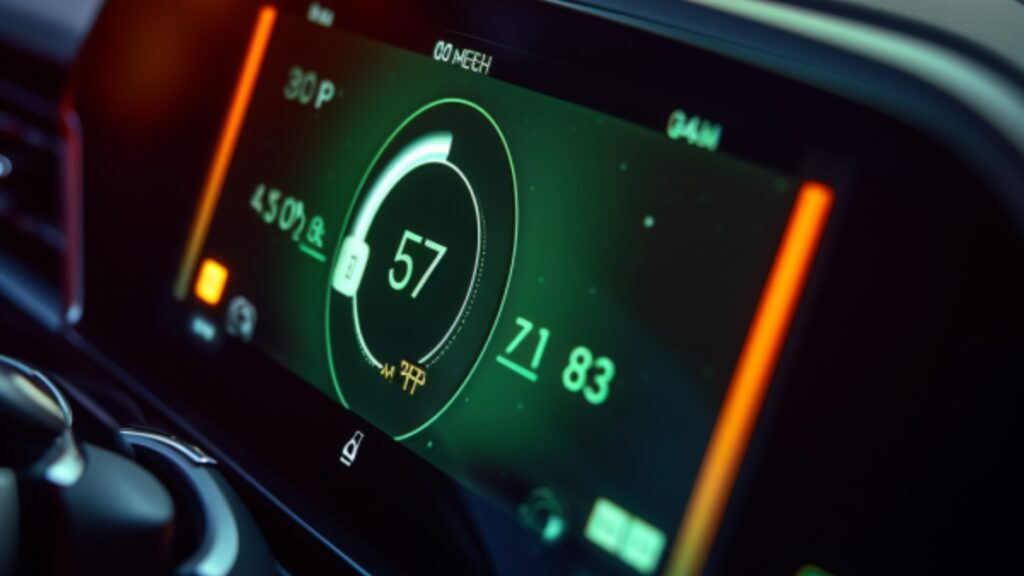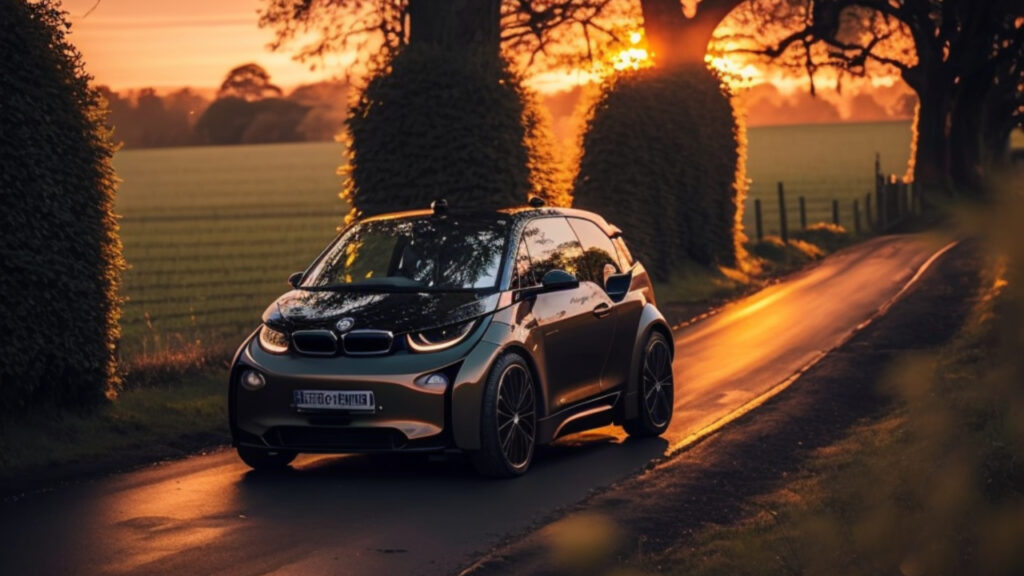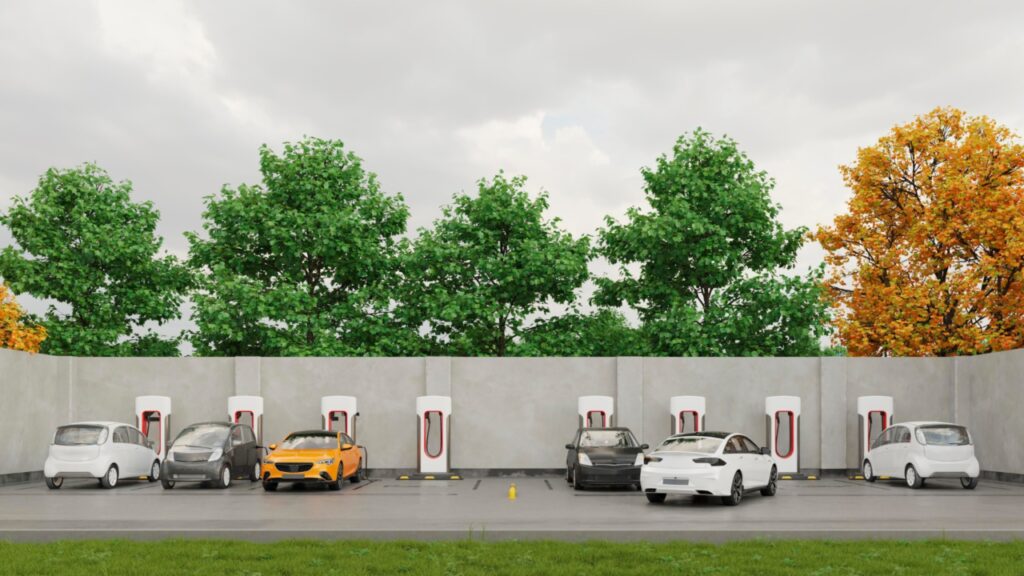Learn the basics of driving an electric car, from getting in and starting it to driving, stopping and locking it.
Unlocking your EV
There are several ways to unlock an electric car, depending on the make and model. Some common methods include
- Key Fob: Most electric cars come with a key fob that you can use to unlock the doors and boot, and sometimes even start the car. Just press the button on the key fob and the car should unlock.
- Touchscreen: Some electric cars have a touchscreen on the dashboard that you can use to unlock the car. Simply press the “unlock” button on the screen.
- Smartphone app: Many electric car manufacturers offer a smartphone app that you can use to unlock and start the car, as well as access other features like charging status and climate control.
- Keyless entry: Some electric cars have a keyless entry system, which allows you to unlock the car by touching the door handle or using the key fob within a certain range of the car.
- Manual key: Some electric cars come with a manual key that you can use to unlock the doors in case the battery on the key fob dies or if you don’t have access to the key fob.
It’s important to check your owner’s manual for specific instructions on how to unlock your electric car.
Getting Comfortable
To adjust the driving position in an electric vehicle (EV), you’ll need to follow these steps:
- Adjust the seat: Move the seat forward or backwards, up or down, and adjust the lumbar support until you’re in a comfortable position that allows you to reach the pedals and steering wheel easily.
- Adjust the steering wheel: Most EVs allow you to adjust the height and angle of the steering wheel to find a comfortable driving position.
- Adjust the mirrors: Make sure that you have a clear view of the road behind you by adjusting the side mirrors and rearview mirrors.
- Find the right driving mode: Some EVs have different driving modes, such as sport or comfort, which can adjust the vehicle’s responsiveness and handling to suit your driving style.
It’s important to take the time to adjust your driving position before you start driving, as it can help reduce fatigue and improve overall driving comfort and safety. If you’re having trouble adjusting your driving position, it may be helpful to consult your owner’s manual or reach out to the manufacturer for assistance.
Where are the Dials?
Getting used to the infotainment and systems in an electric vehicle (EV) can take some time, but here are some tips to help you get started:
- Read the manual: Your EV’s owner’s manual will have a wealth of information about the different systems and features, as well as how to use them. Take some time to read through it and familiarize yourself with the different functions.
- Explore the controls: Spend some time sitting in your EV, experimenting with the controls, and getting a feel for how everything works. Pay special attention to the infotainment system and any advanced driver assistance systems (ADAS) your vehicle may have.
- Use the controls while parked: Try adjusting the climate control, changing the radio station, or using any other features while your EV is parked to get a sense of how they work.
- Ask for help: If you’re having trouble figuring out a particular system or feature, don’t hesitate to ask for help. This could mean reaching out to the manufacturer, talking to a dealership, or consulting forums or online communities.
- Practice: The more you use the infotainment and systems in your EV, the more familiar you’ll become with them. So, don’t be afraid to experiment and get comfortable with everything.
Remember, the infotainment and systems in your EV are there to enhance your driving experience, so take your time getting used to them and don’t be afraid to ask for help.

Starting an Electric Car
Starting an electric car is a simple and intuitive process, as the car does not rely on traditional engine components. Here are the steps to start an electric car:
- Ensure Adequate Charge: Before starting the car, make sure that the battery is fully charged.
- Engage Brake Pedal: Place your foot on the brake pedal to activate the car.
- Power On: Press the power button to turn on the car. Some electric cars can be started by pressing the brake pedal.
- Select Drive or Reverse: Depending on where you want to go, select the “Drive” or “Reverse” position on the gear selector.
- Accelerate: To start moving, press the accelerator pedal. The car will begin to move forward or backward, as selected in the previous step.
Starting an electric car is a smooth and stress-free process, as long as the battery is charged and the brake pedal is engaged. With these easy steps, you’ll be on the road in no time!
What about getting going?
Driving an electric vehicle (EV) offers a unique and exciting driving experience, with a number of differences compared to traditional gas-powered cars. Here are some of the highlights to look forward to:
- Acceleration: EVs boast instant torque, providing a smooth and speedy ride that can be thrilling and satisfying.
- Braking: With regenerative braking, EVs convert energy from the brakes into battery power, making it easier to conserve energy and extend the range of your vehicle.
- Silence: EVs run quietly, offering a peaceful and serene driving environment that you’ll appreciate.
- Range: With advancements in battery technology, EVs offer ample range for daily commutes, and the option to recharge at home or at public charging stations.
- Charging: Charging an EV is convenient, with a range of charging options available, including at home or at public charging stations.
Driving an EV is a unique experience that offers a clean, quiet, and energy-efficient alternative to traditional gas-powered cars. Embrace the differences and enjoy the ride!

Stopping an electric car
- Gradually release the accelerator pedal to slow down the car.
- Press the brake pedal to bring the car to a stop.
- Move the gear selector to the “Park” position.
- Press the power button or brake pedal to turn off the car.
It’s important to note that the specific steps may vary slightly depending on the make and model of the electric car. It’s recommended to consult the car’s owner’s manual for detailed instructions.
Preserving your range, or the distance you can travel on a single charge, is an important aspect of electric vehicle (EV) ownership. Here are some tips for preserving your range:
- Minimize idling: Turn off the car when waiting in traffic or at a stoplight to conserve energy.
- Use regenerative braking: This feature helps recharge the battery as you slow down.
- Avoid fast acceleration: Rapid acceleration drains the battery quickly, so drive smoothly and efficiently.
- Minimize air conditioning and heating usage: Both air conditioning and heating consume energy, so limit their use or use them efficiently.
- Use cruise control: This helps you maintain a consistent speed, reducing the need for sudden acceleration and deceleration.
- Avoid using accessories: Use features like the sound system, seat heaters, and headlights sparingly to conserve energy.
- Park in the shade: Park in a shaded area to reduce the load on the air conditioning system, which helps conserve battery life.
- Plan your trips: Plan your trips efficiently to reduce the distance you need to travel and avoid unnecessary detours.
- Check tyre pressure: Proper tyre pressure helps reduce rolling resistance and improves range.
- Keep the battery cool: If possible, avoid exposing the battery to extreme heat or cold, as this can affect range.
By following these tips, you can help extend the range of your electric car and make the most of your battery.

What about charging it?
Charging an electric vehicle (EV) is a simple process, and there are several ways to do it:
Home Charging: The easiest and most convenient way to charge an EV is with a home charging station, which can be installed in your garage or driveway. Simply plug the charging cord into the EV and into the charging station, and the car will start charging. Most EVs can be fully charged overnight using a home charging station.
Public Charging: If you’re on the go and need to recharge your EV, you can find public charging stations in many locations, including shopping centres, highway rest areas, and other public places. Simply park your EV near the charging station, plug in the charging cord, and wait for the battery to charge.
Slow Charging: Some EVs can also be charged using a standard 110-volt household outlet, although this method is much slower than home or public charging.
Regardless of the charging method you choose, be sure to follow the manufacturer’s guidelines and use the correct charging cord and plug. Also, be mindful of the charging time and plan your trips accordingly to ensure you have enough range to reach your destination.
Where do you plug it in?
The electric vehicle (EV) charging port is typically located on the front or side of the car, near the front grille or the front wheel well. The exact location may vary depending on the make and model of the EV, but it is usually clearly marked with a charging symbol. The charging port is usually covered by a flap or a door that opens to reveal the charging port itself, which is where you’ll plug in the charging cord.

Once you’ve located the charging port, simply open the flap or door, insert the charging cord, and close the flap or door. Then, plug the other end of the charging cord into the charging station or wall outlet, as appropriate.
It’s always best to consult the owner’s manual or the manufacturer’s guidelines to get a clear understanding of the charging process, including the location of the charging port, the type of charging cord to use, and the recommended charging time.
Electric vehicle (EV) charging plugs in the UK can differ
The UK Three Pin Plug has a power rating of 2.3-3 kW AC and is a standard UK domestic electricity outlet. It’s not designed for prolonged use, and charging an EV with this type of plug can be very slow, with a maximum power output of 3 kW.
The Type 1 Plug has a power rating of 3-7 kW AC and is less common in modern EVs. This plug provides approximately 12 miles of range per 30 minutes of charging and is only available in a single phase. It has no locking mechanism when the car is connected to the supply.
The Type 2 Plug has a power rating of 3-42 kW AC and is becoming the standard European charging cable connector type. This plug provides approximately 75 miles of range per 30 minutes of charging and is compatible with both single and three phase electricity supplies. It has an in-built locking mechanism when connected to the power supply. Tesla has a 120 kW DC version of the Type 2 Plug.
The CHAdeMO Plug has a power rating of 50 kW DC and is an older type of charging cable connector for rapid charging. It provides approximately 85 miles of range per 30 minutes of charging and is compatible with Japanese vehicle manufacturers. It’s the most common rapid connector type due to the popularity of the Nissan Leaf.
The Combined Charging System (CCS) Plug has a power rating of 50-350 kW DC and is the most versatile rapid charging connector. It provides approximately 85-200 miles of range per 30 minutes of charging and is likely to become the most popular DC connector standard. It enables a higher power rating to support larger ultra-rapid chargers.

2 thoughts on “The Ultimate Guide to Electric Car Basics: Everything You Need to Know.”
Comments are closed.